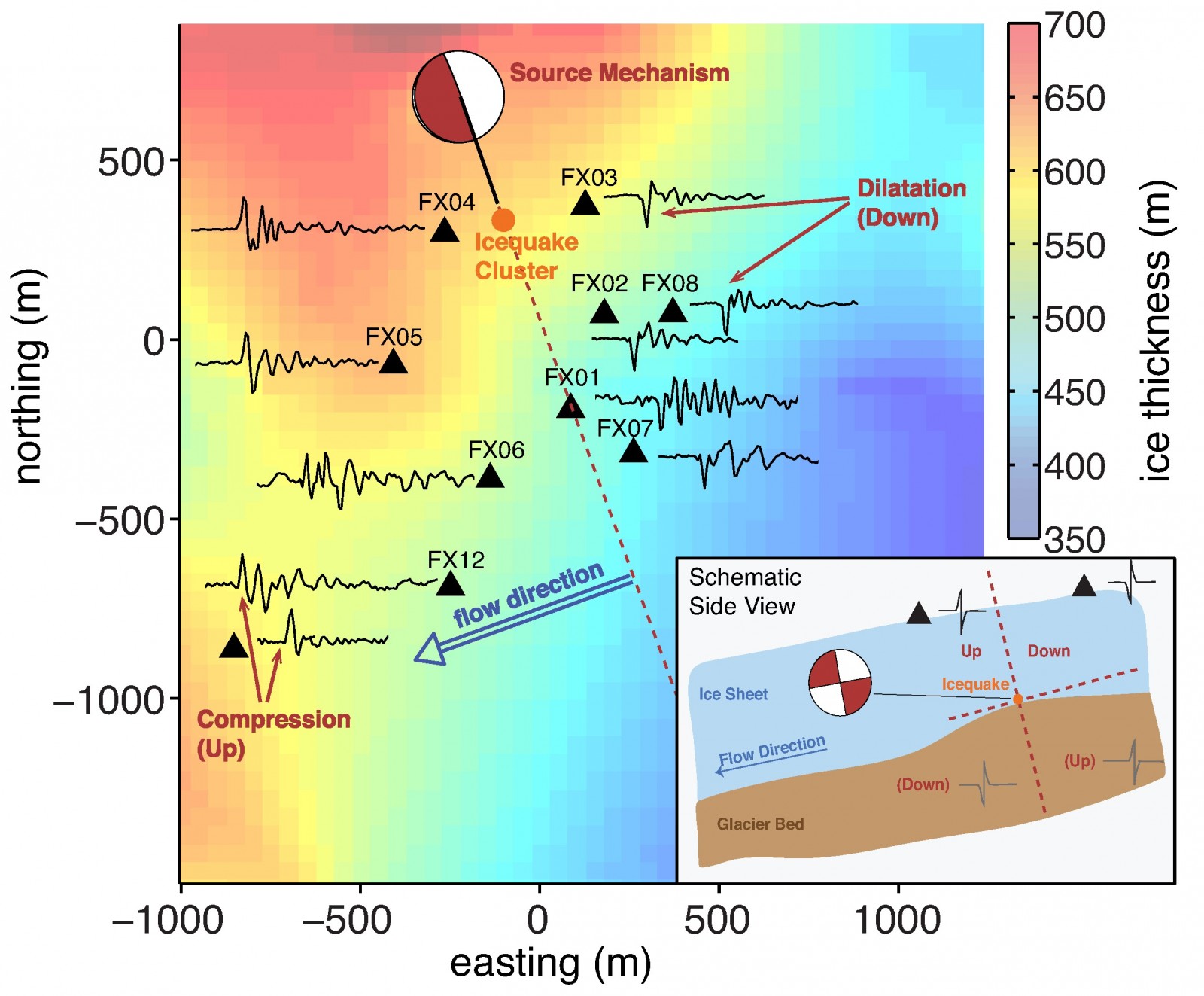The Greenland Ice Sheet contains enough fresh water to raise global sea level by around 6 m, therefore it is very important to understand how the ice moves from the interior of the ice sheet towards the oceans. Processes that happen at the base of the ice sheet, where the ice meets the bed, are known to be a key control on how the ice moves. Geophysical techniques, such as recording tiny icequakes ...[Read More]
Image of the Week: Icequakes! Stick-Slip motion under Western Greenland

Schematic stick-slip source model explaining the observed first-motion pattern of a basal icequake (orange dot). For each station, the stacked waveform of the direct P wave is shown with first up or down motion. These observations are consistent with the beach ball, which represents a low-angle thrust fault in the ice flow direction. Inset: schematic side view of the stick-slip mechanism, where the ice is sliding over the bed. Beachball and radiation pattern are shown.
